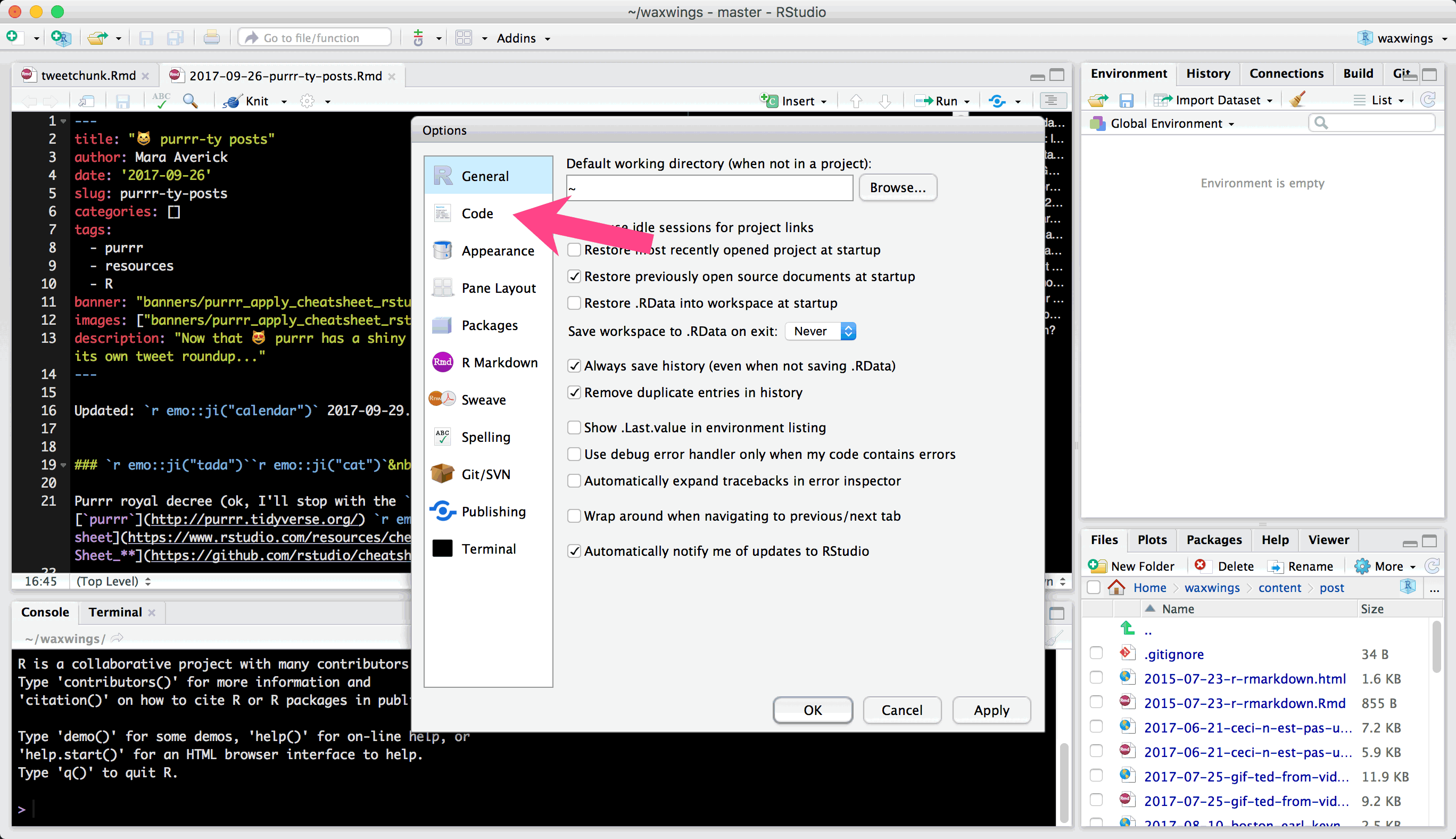When changing the category for a question, you will not lose anything. The thread stays the same. All you need to do is click the pencil icon next to the post title, and then use the dropdown to select a different category.
- reprex 📦
- reprex GitHub
- The Minimal Reproducible Example Paradox by Yihui Xie
- tidyverse help: reprex
- rOpenSci community call
- Help me help you slide deck by Jenny Bryan
- Magic Reprex by Nick Tierney
- StackOverflow: How to make a great R reproducible example? aka MCVE
- Three tips for posting good questions to R-help and Stack Overflow
- [So you’ve been asked to make a reprex](https://www.jessemaegan.com/post/so-you-ve-been-asked-to-make-a-repre
This file contains bidirectional Unicode text that may be interpreted or compiled differently than what appears below. To review, open the file in an editor that reveals hidden Unicode characters.
Learn more about bidirectional Unicode characters
| # devtools::install_github("sellorm/rsay") | |
| library(rsay) | |
| # devtools::install_github("sckott/cowsay") | |
| cowsay::say(what = "What up?", by = "cat") | |
| speak("What up?", "Fiona") |
This file contains bidirectional Unicode text that may be interpreted or compiled differently than what appears below. To review, open the file in an editor that reveals hidden Unicode characters.
Learn more about bidirectional Unicode characters
| --- | |
| title: "NFL Series: Exploring the performance of NFL's best running backs" | |
| author: "Thomas Vincent" | |
| output: html_notebook | |
| --- | |
| source: <https://tlfvincent.github.io/2017/10/08/nlf-running-back-deep-dive/> | |
| ## 1. Prerequisites |
This file contains bidirectional Unicode text that may be interpreted or compiled differently than what appears below. To review, open the file in an editor that reveals hidden Unicode characters.
Learn more about bidirectional Unicode characters
| snippet twe | |
| ```{r, echo = FALSE} | |
| blogdown::shortcode("tweet", "${1:tweetid}") | |
| ``` |
This file contains bidirectional Unicode text that may be interpreted or compiled differently than what appears below. To review, open the file in an editor that reveals hidden Unicode characters.
Learn more about bidirectional Unicode characters
| <!--GH Issue: https://github.com/tidyverse/ggplot2/issues/2231--> | |
| <!--source http://ggplot2.tidyverse.org/reference/geom_text.html#-code-geom-label-code- --> | |
| <!--Current--> | |
| <h2 class="hasAnchor" id="-code-geom-label-code-"> | |
| <a class="anchor" href="#-code-geom-label-code-"></a> | |
| <code>geom_label</code> | |
| </h2> |
Source: http://www.tidyverse.org/articles/2017/08/tidyr-0.7.0/
A data expression is either a bare name or an expression of the form x:y or c(x, y). In a data expression, you can only refer to columns from the data frame.
Everything else is a context expression in which you can only refer to objects that you have defined by assigning with <-.
This file contains bidirectional Unicode text that may be interpreted or compiled differently than what appears below. To review, open the file in an editor that reveals hidden Unicode characters.
Learn more about bidirectional Unicode characters
| --- | |
| title: "Tidy evaluation, most common actions" | |
| author: "Edwin Thoen" | |
| date: "2017-08-25" | |
| output: | |
| html_document: | |
| keep_md: TRUE | |
| --- | |
| ```{r setup, include=FALSE} |


